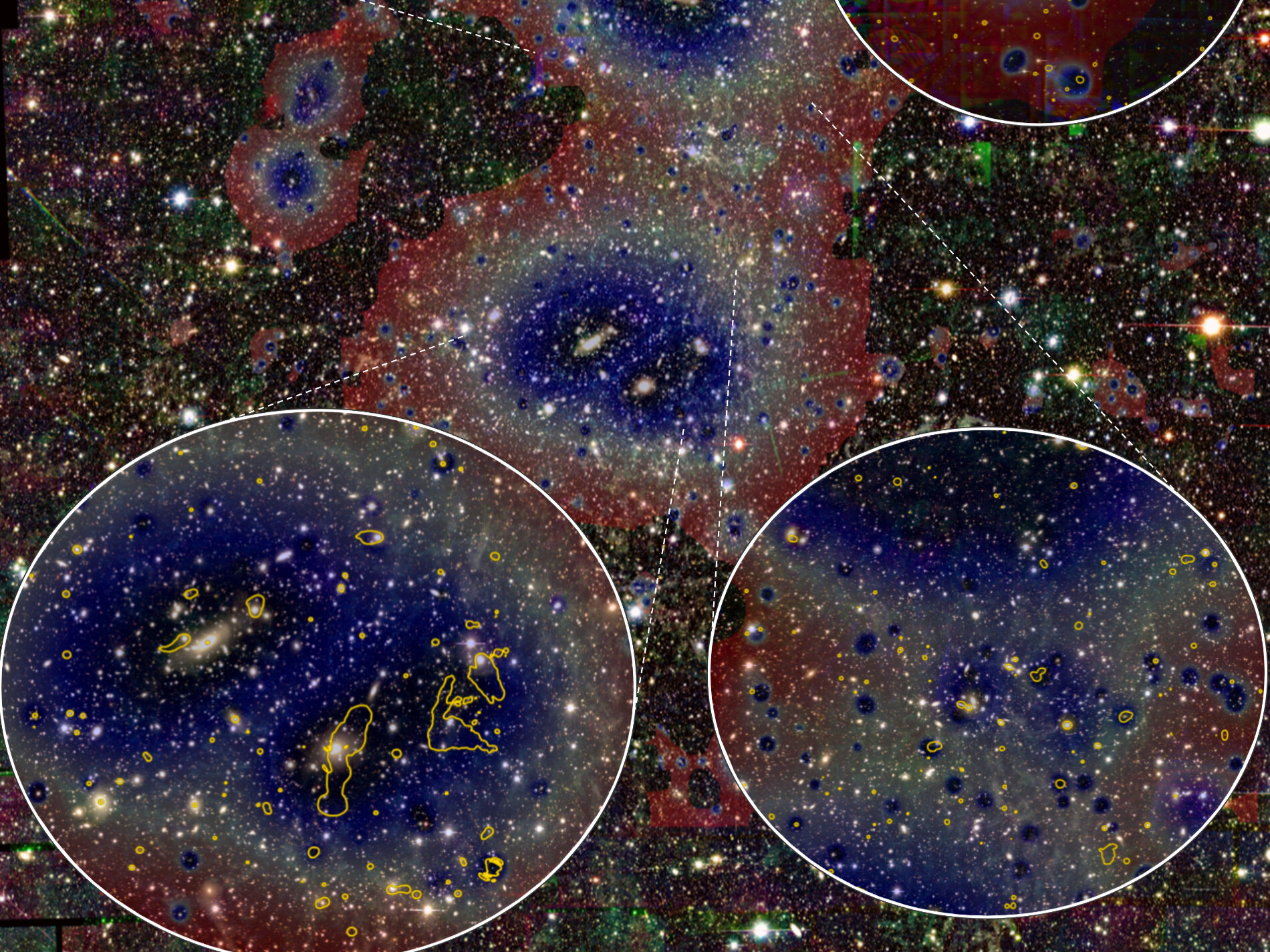
 Astronomy and Astrophysics“width =” 800 “height =” 480 “/>
Astronomy and Astrophysics“width =” 800 “height =” 480 “/>More than half of the matter in our universe has been hidden from us so far. Astrophysicists, however, suspected where it might be: in so-called filaments, inscrutably large thread-like structures of hot gas that surround and connect galaxies and galaxy clusters. A team led by the University of Bonn has now for the first time observed a gas filament with a length of 50 million light years. The structure is strikingly similar to the predictions of computer simulations. Perception thus also confirms our ideas about the origin and evolution of our universe. The results are published in the journal Astronomy and Astrophysics.
We owe our existence to a minor deviation. The Big Bang took place almost exactly 13.8 billion years ago. It is the beginning of space and time, but also of all the matter that makes up our universe today. Although initially concentrated at one point, it expanded at lightning speed – a gigantic cloud of gas in which matter was almost evenly distributed.
Almost, but not quite: in some parts the cloud was a bit denser than in others. And for this reason alone, there are planets, stars, and galaxies today. This is because the denser regions exerted slightly higher gravitational forces, pulling the gas from their surroundings towards them. More and more matter was therefore concentrated in these regions over time. However, the space in between became emptier and emptier. Over the course of more than 13 billion years, a kind of sponge structure developed: large “holes” without any matter, with in between areas where thousands of galaxies gather in a small space, so-called clusters of galaxies.
 Astronomy and Astrophysics“/>
Astronomy and Astrophysics“/>Fine web of gas wires
If it really happened like this, the galaxies and clusters would still have to be connected by remnants of this gas, like the gossamer threads of a spider web. “According to calculations, more than half of all baryonic matter in our universe resides in these filaments – this is the form of matter that makes up stars and planets, just like ourselves,” explains Prof. Dr. Thomas Reiprich from the Argelander Institute of Astronomy at the University of Bonn. Yet so far it has escaped our sight: due to the enormous expansion of the filaments, the matter in it is extremely diluted: it contains only ten particles per cubic meter, which is far less than the best vacuum we can create on Earth.
With a new measuring instrument, the eROSITA space telescope, Reiprich and his colleagues were now able to make the gas fully visible for the first time. “eROSITA has very sensitive detectors for the type of X-rays emitted from the gas in filaments,” explains Reiprich. “It also has a large field of view – like a wide-angle lens, it captures a relatively large portion of the sky in a single measurement, and with very high resolution.” This allows detailed images to be made of such enormous objects such as filaments in a relatively short time.
 Astronomy and Astrophysics“/>
Astronomy and Astrophysics“/>Confirmation of the standard model
In their study, the researchers examined a celestial body called Abell 3391/95. This is a system of three galaxy clusters about 700 million light-years away. The eROSITA images show not only the clusters and numerous individual galaxies, but also the gas filaments connecting these structures. The entire filament is 50 million light years long. But it could be even more massive: the scientists assume that the images only show part.
“We compared our observations with the results of a simulation that reconstructs the evolution of the Universe,” explains Reiprich. “The eROSITA images are strikingly similar to computer-generated images. This suggests that the generally accepted standard model for the evolution of the universe is correct.” Most importantly, the data shows that the missing matter is probably actually hidden in the filaments.
Reiprich is also a member of the Transdisciplinary Research Area (TRA) “Building blocks of matter and fundamental interactions” at the University of Bonn. Scientists from the most diverse faculties and disciplines come together in six different TRAs to collaborate on future-relevant research themes of the University of Excellence.
Has the hidden matter of the universe been discovered?
TH Reiprich et al. The Abell 3391/95 galaxy cluster system. A 15 Mpc intergalactic medium emission filament, a warm gas bridge, emerging matter clumps and accelerated or re-accelerated plasma discovered by combining SRG / eROSITA data with ASKAP / EMU and DECam data, Astronomy and Astrophysics (2020). DOI: 10.1051 / 0004-6361 / 202039590
Provided by the University of Bonn
Quote: Longest intergalactic gas filament discovered (2020, December 17) Retrieved December 17, 2020 from https://phys.org/news/2020-12-longest-intergalactic-gas-filament.html
This document is protected by copyright. Other than fair treatment for the purposes of private study or research, no part may be reproduced without written permission. The content is provided for informational purposes only.